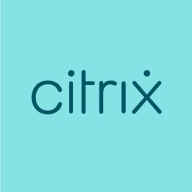

Citrix DaaS and Parallels Desktop are competing in the virtual desktop and application delivery market. Citrix DaaS has an advantage in scalability and support, while Parallels Desktop is noted for its feature set and overall value.
Features: Citrix DaaS offers robust enterprise-level capabilities, providing extensive scalability and integration with various IT environments. Key features include scalability, enterprise-level security, and integration with different IT ecosystems. Parallels Desktop delivers flexibility for seamless integration with macOS and Windows, making it ideal for high-performance application access on Mac devices. Key features include cross-platform compatibility, high-speed performance, and ease of use for both personal and professional tasks.
Ease of Deployment and Customer Service: Citrix DaaS supports complex enterprise needs with a sophisticated deployment process, backed by comprehensive customer service. Parallels Desktop provides a straightforward setup process, beneficial for individual and small business users seeking quick, efficient deployment, and is supported by accessible customer service.
Pricing and ROI: Citrix DaaS generally incurs a higher setup cost due to its extensive capabilities, promising significant ROI for large enterprises over time. Parallels Desktop offers a cost-effective solution with quicker ROI, appealing to smaller businesses or individuals. Citrix focuses on long-term value for large-scale operations, while Parallels emphasizes immediate cost efficiency.


Enable secure, flexible work with the leader in virtual apps and desktops
Deliver desktop as a service (DaaS) from any cloud or datacenter
Get started with Citrix DaaS (formerly Citrix Virtual Apps and Desktops service) in minutes to provide a familiar, high-performance digital workspace experience to your users. We’ll manage the infrastructure and security. You focus on your business.
Parallels Desktop is a virtualization software for Mac that allows users to run Windows, Linux, and other operating systems alongside macOS without rebooting. It provides a seamless experience for users who need access to different operating systems on a single machine.
As a powerful cross-platform solution, Parallels Desktop is designed for developers, testers, and users who require flexibility in operating multiple systems concurrently. It efficiently manages resources, offering significant advantages for those who need Windows applications on a Mac without compromising on performance. Its intuitive setup and strong integration with macOS make it highly appealing to technical teams looking for productivity enhancements.
What features stand out in Parallels Desktop?In industries like software development and design, Parallels Desktop is often implemented to streamline operations, allowing professionals to simultaneously utilize macOS and Windows tools. This adaptability proves essential in environments that demand the use of diverse software applications, ensuring continuity and productivity.
We monitor all Virtual Desktop Infrastructure (VDI) reviews to prevent fraudulent reviews and keep review quality high. We do not post reviews by company employees or direct competitors. We validate each review for authenticity via cross-reference with LinkedIn, and personal follow-up with the reviewer when necessary.